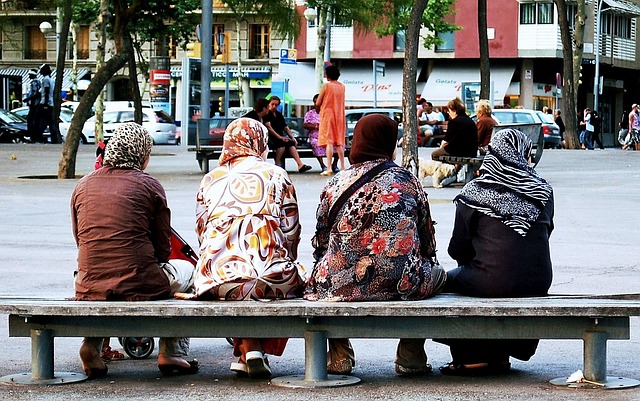When neighbors collaborate on green projects, they create more than a patch of soil or a garden; they build a shared sense of stewardship that strengthens the entire community. A healthy neighboring relationship often starts with small gestures—a shared watering schedule, a conversation over a balcony herb plant—and grows into joint endeavors that transform streetscapes, reduce heat islands, and enhance biodiversity. This article explores how neighbors can nurture each other’s green spaces, share knowledge, and create lasting ecological benefits while fostering friendship and trust.
Why Shared Green Spaces Matter
Shared green spaces are critical for urban resilience. They mitigate air pollution, absorb stormwater, and cool neighborhoods during heat waves. More importantly, they provide a social platform where residents can meet, exchange ideas, and support one another. When neighbors collaborate on a community garden, the resulting “green tongue” becomes a living laboratory where ecological principles meet human experience.
Health and Well‑Being Benefits
Research shows that proximity to vegetation reduces stress, lowers blood pressure, and improves mental health. A neighboring relationship centered on gardening allows residents to spend intentional time outdoors, leading to increased physical activity and better sleep patterns. These personal gains ripple through the community, encouraging others to engage in similar eco‑friendly practices.
“A simple walk around a neighbor’s garden can be a daily dose of nature, providing both physical and psychological relief.”
Getting Started: Building the Foundations
Before planting, neighbors should establish clear communication channels. A group chat, a shared calendar, or a monthly meeting can set expectations and outline responsibilities. It is essential to discuss zoning regulations, shared resources, and potential conflicts early on. A transparent process ensures that the neighboring relationship remains positive and productive.
Choosing the Right Project
Not every garden or green initiative suits every neighborhood. Factors such as soil type, sunlight exposure, and local wildlife influence plant selection. Consider projects that align with the community’s values—herb gardens for cooking, pollinator beds for bees, or rain gardens for stormwater management. The right project fosters enthusiasm and creates a shared sense of ownership.
- Community herb garden: supplies fresh produce for local cooking classes.
- Pollinator habitat: attracts bees, butterflies, and birds.
- Rain garden: captures runoff, reducing flood risk.
Designing with Nature in Mind
Eco‑friendly design is more than aesthetic; it promotes long‑term sustainability. Selecting native plants reduces water usage, supports local fauna, and eases maintenance. Using raised beds and compost bins encourages soil health, while installing permeable pathways helps manage water runoff. These design choices illustrate how a neighboring relationship can simultaneously benefit the environment and the community.
Incorporating Educational Elements
Shared green spaces double as informal classrooms. Residents can host workshops on composting, seed‑saving, or wildlife monitoring. Labeling plant species with QR codes that link to short descriptions (without using actual URLs in the HTML) can provide interactive learning opportunities. This educational dimension reinforces the neighboring relationship, as residents learn from one another and celebrate collective achievements.
Maintenance: A Team Effort
Regular maintenance is essential for garden vitality and neighborly harmony. A rotating schedule—where each household takes turns weeding, pruning, or watering—ensures fairness and keeps the workload manageable. When neighbors see tangible results from their collective effort, the sense of responsibility grows, strengthening the bond between them.
- Week 1: Weeding and soil amendment.
- Week 2: Pruning and pruning of invasive species.
- Week 3: Mulching and water testing.
- Week 4: Harvesting and sharing produce.
Dealing with Challenges
Disputes over water usage, plant choice, or design can strain a neighboring relationship. Open dialogue and mediation, possibly involving a neutral facilitator such as a community coordinator, can resolve conflicts. Establishing a written agreement that outlines responsibilities, conflict‑resolution steps, and decision‑making processes safeguards the project’s longevity.
Scaling Up: Expanding Green Networks
As the garden succeeds, neighbors may consider expanding to adjacent lots or collaborating with neighboring blocks. Linking gardens through “green corridors” enhances ecological connectivity, allowing wildlife to move freely and supporting pollinator health. This scaling demonstrates how a neighboring relationship can evolve from a single plot to an interconnected network of shared ecosystems.
Engaging Local Businesses and Schools
Local businesses can provide sponsorships, donated tools, or expertise, while schools can offer student volunteers for planting days. These partnerships broaden the scope of the neighboring relationship, incorporating diverse community voices and resources. They also raise awareness about environmental stewardship among younger generations, ensuring the continuity of the green initiative.
Measuring Impact: Quantifying Success
Tracking metrics—such as the volume of compost produced, the number of native pollinator sightings, or the reduction in local temperature—provides tangible evidence of progress. Sharing these results in community newsletters or local meetings reinforces pride and accountability. When neighbors see the measurable benefits of their work, they feel more invested and willing to continue the collaboration.
Environmental Footprint Reduction
One of the most visible outcomes is the lowered carbon footprint due to reduced transportation of produce and decreased reliance on artificial cooling. Additionally, the increased green cover contributes to carbon sequestration, helping offset household emissions. These environmental gains highlight how a neighboring relationship can serve both ecological and social objectives.
Stories of Success
In many cities, communities have turned abandoned lots into thriving community gardens, fostering unity among diverse residents. In one neighborhood, a shared herb garden became a cultural hub where cooking workshops were held, and produce was donated to a local food bank. In another area, a rain garden not only managed stormwater but also served as a site for citizen science projects monitoring rainfall patterns. These stories illustrate the power of collective green action.
Lessons Learned
Successful projects often hinge on clear communication, shared vision, and equitable distribution of labor. Additionally, respecting local regulations, involving all age groups, and maintaining a flexible approach to changing conditions are key. These lessons reinforce the importance of nurturing a resilient neighboring relationship that can adapt over time.
Future Outlook: The Role of Technology
Smart irrigation systems, soil sensors, and community apps can streamline garden management while minimizing water use. While these tools should not replace human interaction, they can enhance efficiency and reduce conflicts over resources. When neighbors collectively decide to adopt such technologies, they reinforce the collaborative spirit that defines a healthy neighboring relationship.
Data Sharing and Transparency
Open data dashboards that display soil moisture, water consumption, or plant growth encourage transparency. When neighbors can see real‑time information, they can make informed decisions about watering or fertilizing schedules. This data‑driven approach underscores accountability and promotes trust within the neighboring relationship.
Conclusion: A Living Community Bond
Shared green spaces are more than ecological assets; they are the threads that weave neighbors together into a resilient community fabric. By planting, maintaining, and celebrating these spaces collectively, residents reinforce their neighboring relationship, create a healthier environment, and nurture a culture of sustainability. The garden becomes a living testament that when people grow together, they can also thrive together.



